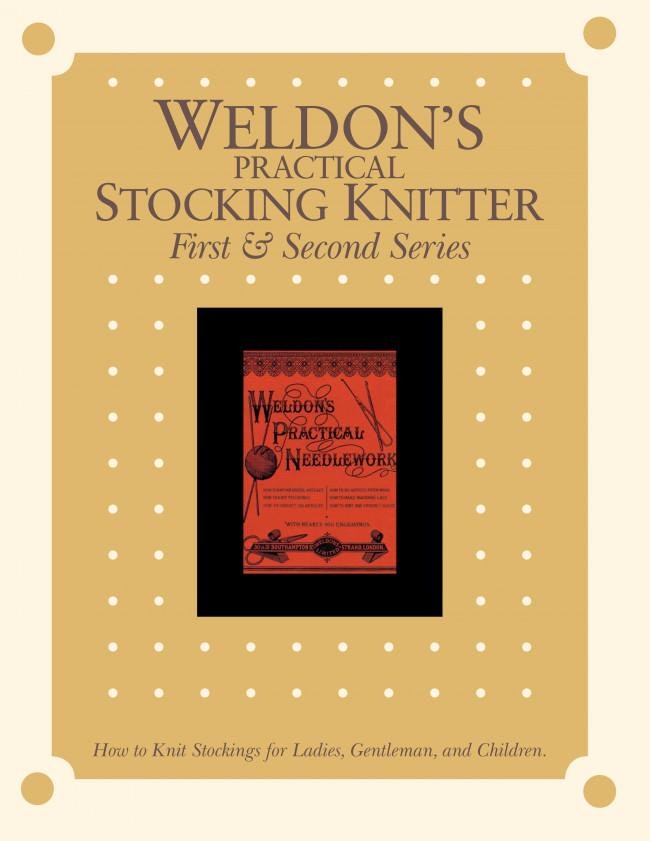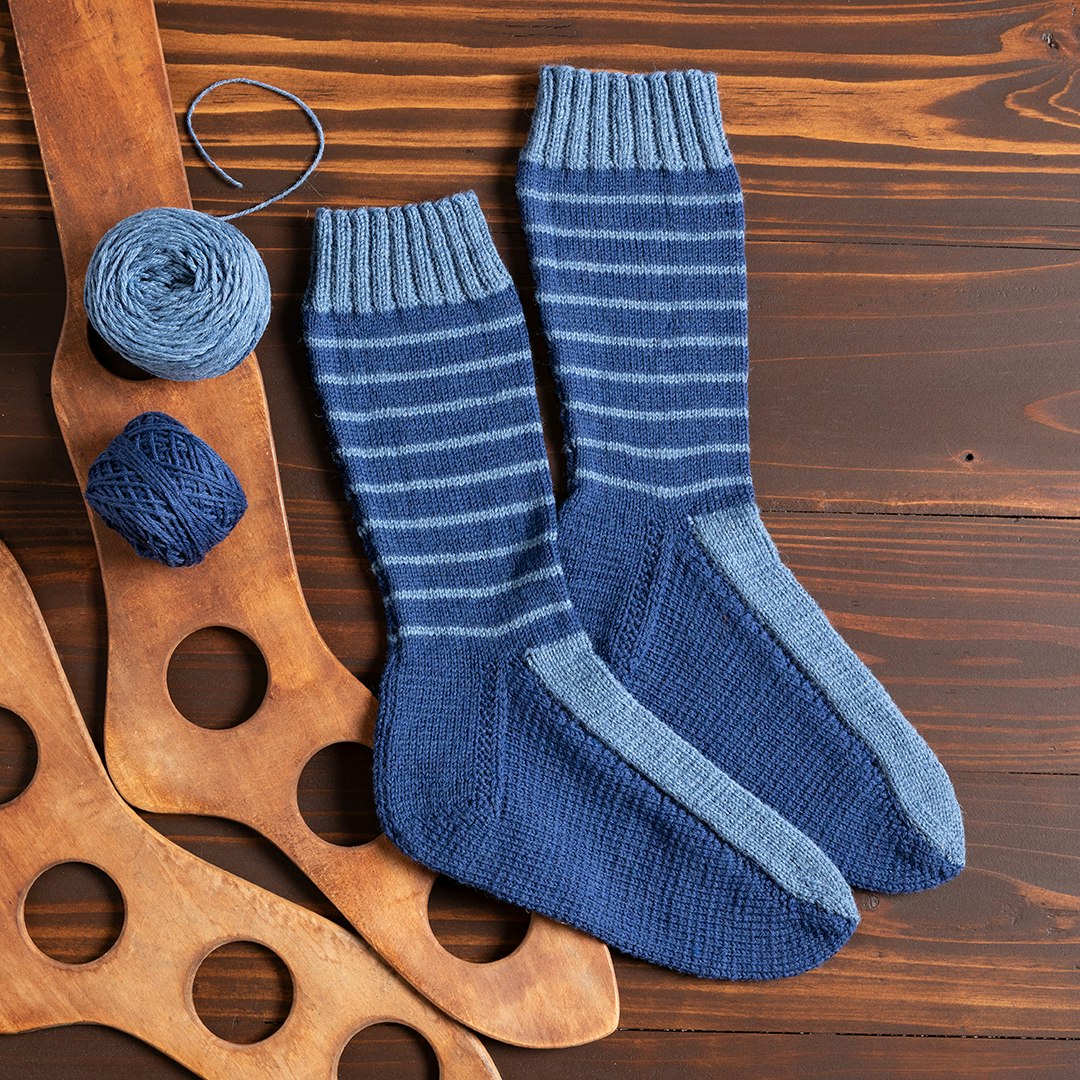Weldon’s Practical Stocking Knitter, First and Second Series was published in 1886 in London, England. This book is a treasure trove of Victorian opinions and techniques on sock knitting for “Ladies, Gentlemen, and Children.”

Weldon’s Practical Stocking Knitter
Today, let’s learn about refooting, a fascinating approach to knitting a sock in such a way that it can be easily resoled and reheeled after those areas give out to wear.
A Foot, Open for Re-footing
According to Weldon’s:
This manner of knitting a foot is strongly advised for men’s and boys’ stockings that are likely to receive rough wear. As will be seen by the illustration, the heel and sole are knitted quite distinctly from the instep, and the two parts are sewn together so that by simply undoing the sewing, the heel and sole can be renewed without in any way interfering with the instep.
The directions that follow this introduction in the original Weldon’s are rather lengthy and detailed, but the ideas is this: Working top down, work a regular sock leg and heel, then work a gusset over just the heel/sole stitches, leaving the instep stitches unworked. The instep should have fewer stitches, ultimately, than the sole; once you’ve decreased the gusset stitches down to that intended sole stitch count, you continue working just the sole in rows, slipping the first stitch of each row. Work toe shaping and then bind off the final 12–14 stitches (note that Kitchener stitch was not commonly used, if used at all, until World War I. So Victorian knitters would have seamed the bound-off toe stitches).
After binding off the sole, you go back and work the instep in rows, again slipping the first stitch of each row, then shaping and binding off the toe to correspond to the sole. The final instruction: “Sew the two pieces of knitting neatly together on the wrong side.”
 Katrina King’s Weldon’s refoot socks from the Fall 2020 issue of PieceWork. Photo by Matt Graves
Katrina King’s Weldon’s refoot socks from the Fall 2020 issue of PieceWork. Photo by Matt Graves
Obviously, this is a rather extreme approach to sock knitting, and it assumes total failure of the sole over time. But you can’t deny that this is a practical sock knitting tip—wear your socks to the bitter end and then efficiently ravel and repair them!
Interested in learning more about sock construction? All Access members can find Weldon’s Practical Stocking Knitter, First and Second Series in the PieceWork library!
Or want to try your hand at a refooting pattern? Find Katrina’s socks in the Fall 2020 issue of PieceWork.
Also, remember that if you are an active subscriber to PieceWork magazine, you have unlimited access to previous issues, including Fall 2020. See our help center for the step-by-step process on how to access them.
Originally published December 17, 2016; updated October 6, 2023.

